Analysis of Use and Installation Requirements of Horn Bollards
Ⅰ. Using methods for horn bollards
The horn bollard belongs to ships and are an important load-bearing equipment for mooring systems. When the ship is docked at the wharf, the fixing device of the mooring cable on the ship is mainly the horn bollard, which bears the external load transmitted by the mooring cable.
The way of cabling on the ship is usually “8” winding. And its bearing capacity will be reduced compared to the overall carrying capacity of the horn bollard. However, the “8” winding usually only results in a higher load on one pile, so measures can be taken to distribute the load on the mooring cable appropriately and evenly on two piles to reduce the load on a single pile.
Experienced seafarers are well aware of this phenomenon. By adjusting the winding way of the horn bollard, the external load will be effectively distributed on two bollards. For example, tie one end of the mooring cable on another pile, and after a few turns on the second pile, make a figure-8 tie and then the two piles basically will bear half of the external load.
Ⅱ. How to ensure the safety of the horn bollard when they are used?
Due to the great instability of the horn bollard during the use, its operation has a great risk. Therefore, in order to ensure the safety of operators, it is required to ensure safety during its use. But in such a situation, how can the user ensure the safety when using the horn bollard?
Operate strictly according to the use requirements. For users, if they want to ensure the safety of their operation during the use of the horn bollard, then in the process of its use, the operators are required to operate in strict accordance with the use requirements. Only in this way can we avoid unnecessary operation problems during the operation, so as to ensure the final using effect of the equipment.
The operating staff must be very experienced. In addition to what has mentioned above, in order to ensure the safety of the use of the horn bollard, the user also needs to arrange for experienced staff to operate. Only in this way can we ensure that there will be no unnecessary use problems during the operation.
Ⅲ. What are the installation requirements on the horn bollard?
Mooring equipment such as horn bollards, at present, mostly adopts steel plate welding structure or welds the steel castings in place, and the welding seam should meet the welding quality requirements. If the mooring equipment is made of castings, the surface of the castings should be trimmed. The gaps at the joints of the casting moulds should be smoothed to the surface, and there should be no defects such as sharp corners, blisters and cracks on the surface of the castings.
The installation form of the equipment varies. Some is directly welded to the deck, some is welded after installing reinforced cladding plates on the deck, and some is installed on the base while the base is welded to the main deck. For the above several installation methods, although they are different, the welding requirements are the same, that is, the size of the weld should meet the requirements of the drawing, and the weld should be free of defects such as cracks, missing welding, welding bumps, and arc craters.
For a small number of mooring equipment using steel castings, the steel castings should be directly welded to the hull structure when installing horn bollard, and the welding requirements are the same as above. After the above mooring equipment is installed, its installation position and installation quality should be checked.

